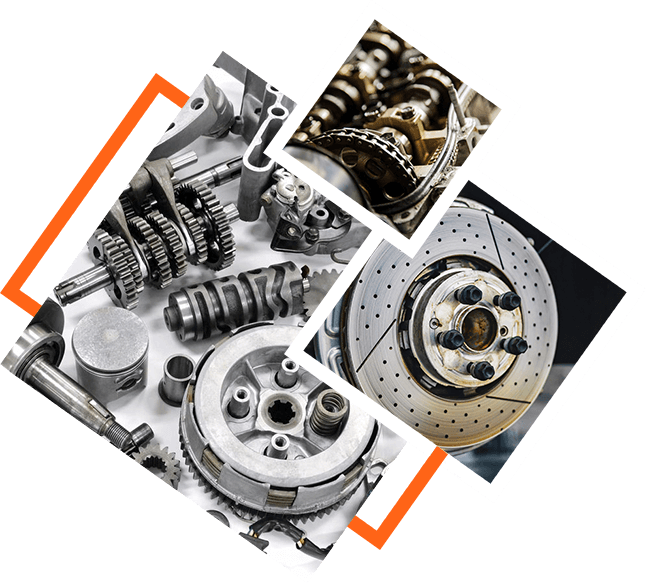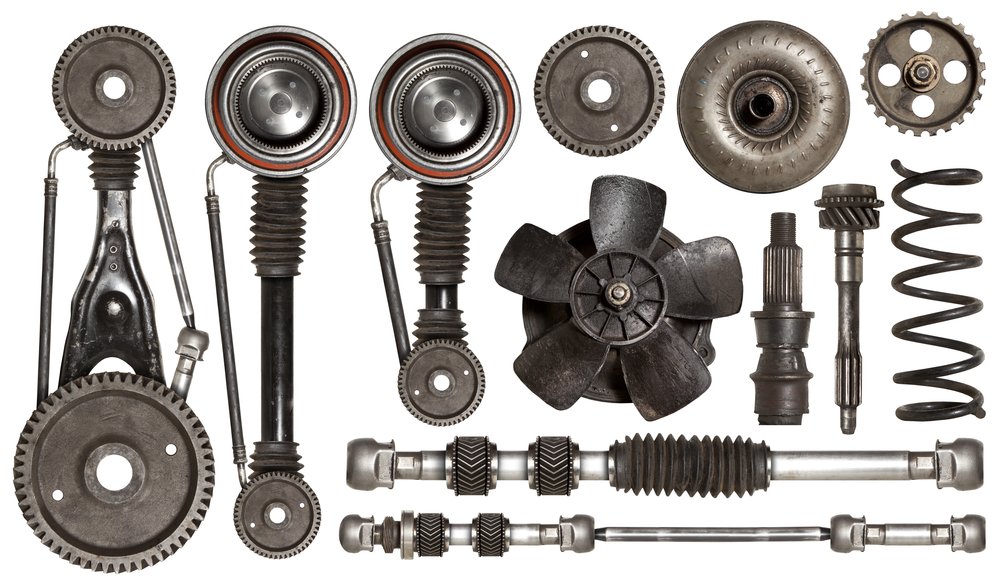To make the most appropriate choice between used and new car parts, you must be aware of their state of repair. The top 10 aspects to think about are given below, along with the pros and cons.
1. Understand the Part's Role and its Criticality
When replacing parts that are crucial to safety (e.g. the brakes suspension and steering), you should always prioritise new parts.
The advantages: The new components are durable and lower the chance of failure.
Cons: Although used parts are often less expensive but they could pose safety risks for systems that are vital.
2. Think about the wear and tear issue
Tip 1: Determine how worn components affect efficiency (e.g. new filters, belts and bearings).
New parts offer optimal performance as well as durability and reliability.
Pros: In good condition, used parts can still be less durable.
3. Determine the length of the parts' life
Used parts can be an economical option for components that have a long life time (e.g. the body panels or rims).
Cons: Used parts are often cheaper than brand new ones however, they might not be as reliable.
Cons: Problems that are difficult to detect (such as hidden rust) can be discovered later.
4. Examine damaged parts of used components
Before purchasing new parts, inspect the parts for cracks, corrosion, or excessive wear.
Pros: It ensures that the parts meet a minimum standard.
Cons: Online, not all used components can be thoroughly examined.
5. Find out if the item is available as new or used
It is possible to use parts that are used if the new parts you require are not in stock or cost too much.
Cons: Your vehicle will run smooth.
Cons: Could require replacement sooner than a new part.
6. Verify compatibility and the history used components
Tips: Make sure that the used part matches the specifications of your vehicle, and also has a clean service history.
Benefits: You are less likely to buy parts that aren't compatible or is defective.
Cons: Limited information regarding the history of certain used parts can create uncertainty.
7. Think about Refurbished Parts
Tip : Refurbished (e.g. transmissions and alternators) parts are an affordable alternative to buying new.
Pros Advantages: More reliable and economical than components that are purely used.
Cons: It's difficult to determine the level of quality of a refurbishing project as well as the company that is providing it.
8. Account for Budget Constraints
Use used parts for things that aren't essential (e.g. Interior trims or other accessories).
Benefits: You will save money and still meet your requirements for functionality.
Pros: Older parts might have a different appearance and performance than new ones.
9. Verify Warranties
A few used parts that are sold by reputable sellers come with the warranty of a limited duration.
Cons: It can be a challenge to receive a refund if the product is not working or defective.
Cons: Parts with warranties that are in use can be expensive and hard to locate.
10. Be aware of the impact of resale value
TIP: New parts could increase the value of your car's resale in particular for major repairs.
Advantages Cons: Customers are more likely believe in replacements with quality parts.
The cons: Used parts may not provide the same value to the vehicle.
Last Thoughts: Weighing the Pros and the Cons
Benefits of New Parts:
Performance, longevity and compatibility All of which are guaranteed.
Most often, they come with a warranty from the manufacturer.
The ideal choice for systems with a high resale price.
Cons of New Replacement Parts
Costs upfront are higher.
Certain parts might be difficult to find in older vehicles or rare models.
Advantages of reusing parts
Cost-effective particularly for non-critical components
Older models or models that have been discontinued are available in greater quantity.
Eco-friendly - Recycles material from the past
Cons of used parts
A high risk of damage wear and a shorter life span.
No warranty or limited warranty
Requires careful inspection to ensure quality.
If you can balance the above tips along with your personal budget and priorities, you will be able to make an informed choice to choose between brand new and used auto parts. See the top pacelajs car parts par cadillac cars for blog examples including auto stuff, parts info, c auto parts, it auto parts, auto parts catalog by vin number, land auto parts, cac parts, auto parts lv, rezerves dalas riga, i auto parts and more.

Top 10 Tips To Think Regarding The Durability And Maintenance Requirements For Car Parts
The consideration of durability and maintenance requirements is essential when shopping for car parts. It could affect the overall price as well as the longevity of your car. The following are the top 10 suggestions, along with their pros and cons.
1. Find the Lifespan of the Part
Tip - Investigate how long the part is predicted to last Based on the manufacturer's recommendations and previous user experiences.
Pros: Identify the moment when a component must be replaced, which makes it possible the proactive maintenance.
Cons: The estimated lifespan may vary depending on driving behavior as well as environmental conditions and maintenance.
2. Check for Wear and Tear Resistance
Select components that have a track record of long-lasting performance, particularly in high-stress components such as conveyor belts and brakes.
Pros: Reduces the frequency of replacement and maintenance costs.
Pros: Parts that last longer may cost more initially.
3. Be aware of the material's quality
TIP: Pick parts with durable materials such as stainless-steel, carbon composites, and reinforced alloys.
The best materials last longer even in extreme conditions.
Cons: Premium materials could increase the cost.
4. Look for components that are resistant to corrosion.
TIP: Look for components that are resistant to corrosion, particularly those that are exposed to moisture, such as brake components or exhaust systems.
Benefits: This component will last longer, particularly in high-humidity areas or where road salt is employed.
Cons: More expensive parts with resistance to corrosion.
5. Check the return and warranty policies
Check the warranty to see the warranty covers damaged parts or premature failures due durability issues.
Cons: A solid warranty will give you security, and it may also save money if a part is not repaired in time.
Contraints: Certain warranties may be subject to limitations or requirements that certain conditions be met.
6. Be aware of the maintenance frequency
Tip: Select parts that are low maintenance or sealed (e.g. sealed bearings, maintenance free batteries).
Pros: Reduces the time and money spent on maintaining the component.
Cons: Certain components with low maintenance could be more expensive up front or require less repair flexibility.
7. Choose parts that are easy to repair or replace
Tip: Opt for parts that are easy to service or replace and reduce the cost of maintenance and time.
Benefits: Reduces labor costs and downtime by simplifying repairs or replacement.
Cons: Some parts that are designed to make replacement easier may not last as well as more intricate components.
8. Read reviews and User Feedback
To assess the reliability of the part review online or speak with a trusted mechanic.
Pros: Offers real-world insight into the endurance and maintenance needs of the component.
Cons The reviews are subjective and may not accurately reflect the exact circumstances or use of the product.
9. Take into account the Manufacturer's Reputation
Tip: Purchase from manufacturers who have a proven track record of manufacturing durable and reliable auto parts.
Pros: Trusted brand are likely to create long-lasting, high-quality components.
Pros: Branded components generally cost more than alternatives that are less well-known.
10. Find a balance between durability and cost
Tip. While durability should be an important factor, it is essential to select a part that fits your budget. Sometimes, it's essential to find a balance between price and durability particularly in the case of non-critical parts.
Benefits: Long-term value is obtained without spending a lot on components that are not essential.
Cons The cost of cutting corners on essential parts will lead to more frequent and costly replacements.
Final Thoughts
Take into consideration the following advantages of focusing on durability and maintenance
Cost-Effective: Durable components minimize the need for frequent replacements, which results in long-term savings.
The parts that require little maintenance are useful and save time.
Quality parts will make sure that your vehicle is more reliable and less likely to break down.
The negatives of ignoring the durability and maintenance
Initial Cost Parts that last and of high quality often will cost more upfront.
Overestimating Longevity. Even the toughest parts will eventually wear out.
Complexity: Certain durable components are harder to repair or replace, resulting in a higher costs of labor.
Use these suggestions to ensure that you select components for your vehicle that last, are cost-effective and simple to maintain. Read the recommended electric-drive parts for lancia cars for site info including auto exterior parts, volvo auto parts near me, this and that auto wrecking, gadi ke part, x auto parts, bmw parts by, auto parts open on sundays, spare parts vin number, imperium parts, spare parts by vin code and more.
